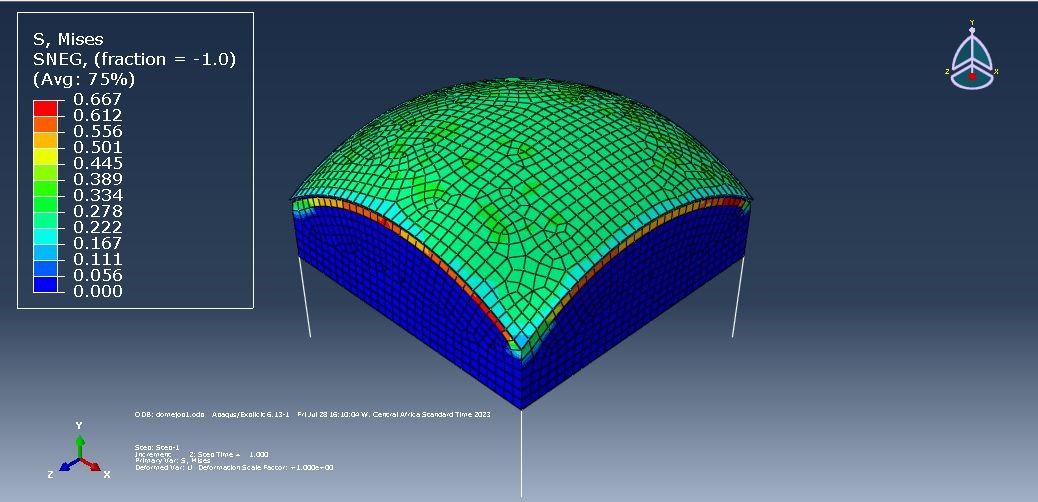Probabilistic Analysis of Shape Formulation Angle on the Reliability of CFRP Reinforced Shell Roofs for Nuclear Facilities
Keywords:
CFRP, Nuclear Structures, Shape Formulation, Structural Reliability, FEA, Monte Carlo Simulation, Radiation Resistance.Abstract
Carbon Fiber Reinforced Polymer (CFRP) has revolutionized structural engineering due to its exceptional strength-to-weight ratio and corrosion resistance, surpassing traditional steel reinforcement. When it comes to shell roof structures, shape formulation plays a vital role in optimizing structural performance under various loading conditions. This research aimed to identify the optimal shape formulation angle that maximizes the structural reliability of CFRP-reinforced shell roofs. To achieve this, a comprehensive Monte Carlo simulation and Finite Element Analysis (FEA) using ABAQUS CAE were conducted. The study evaluated the impact of uncertainties in material properties, geometric configurations, and loading conditions on the performance of CFRP-reinforced shell roofs. Various shape angles, ranging from 5° to 30°, were analyzed, and failure probability and reliability index (β) were assessed. The key findings revealed that a shape formulation angle of 19° provides the lowest failure probability (0.8%) and the highest reliability index (β = 4.2), making it the most structurally efficient angle. A comparative analysis with traditional steel-reinforced concrete showed that CFRP-reinforced shell roofs exhibit a remarkable 35% improvement in structural reliability and a 40% reduction in failure probability under the same loading conditions. This study contributes significantly to the advancement of CFRP applications in structural engineering by providing a data-driven approach to optimizing shell roof designs. The findings demonstrate that the 19° shape angle formulation significantly enhances safety, load-bearing capacity, and durability while reducing structural failure risks. Future research can build upon this work by incorporating wind-induced effects, long-term creep behavior, and hybrid reinforcement strategies for further reliability improvements.


